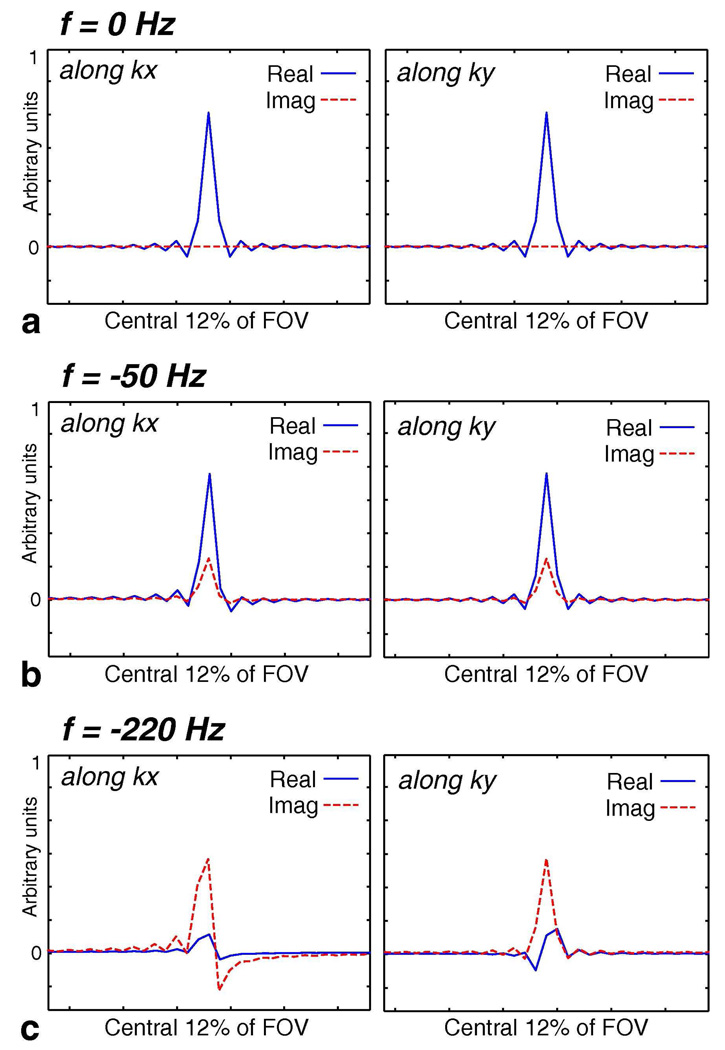FIG. 2.
Point Spread Functions (PSF) for Varying Degrees of Off-Resonance. The PSFs for concentric rings have been calculated for the cases of zero, mild (−50 Hz), and greater (−220 Hz) off-resonance. Radial cuts of the PSFs along kx and ky are plotted in this figure for the central 12% of the FOV. All curves have the same scale. When f = 0 Hz (a), the PSF resides entirely in the real part and consists of a main lobe of 1 pixel full-width at half-maximum (FWHM) along with smaller symmetric side lobes. At f = −50 Hz (b), the PSF contains a slightly broader main lobe (still around 1 pixel FWHM), some non-zero imaginary component due to the asymmetry of the phase modulation in k-space, and mild asymmetry in the side lobes due to the complex nature of the phase modulation. Overall, the PSF is still relatively circularly symmetric. With an off-resonant frequency of f = −220 Hz (fat at 1.5 T) (c), the PSF significantly deviates from the f = 0 Hz case and is no longer circularly symmetric. Two opposing lobes are seen in the imaginary part along kx and in the real part along ky. Each of the two lobes is about 2 pixels FWHM and creates a splitting or swirling effect.

